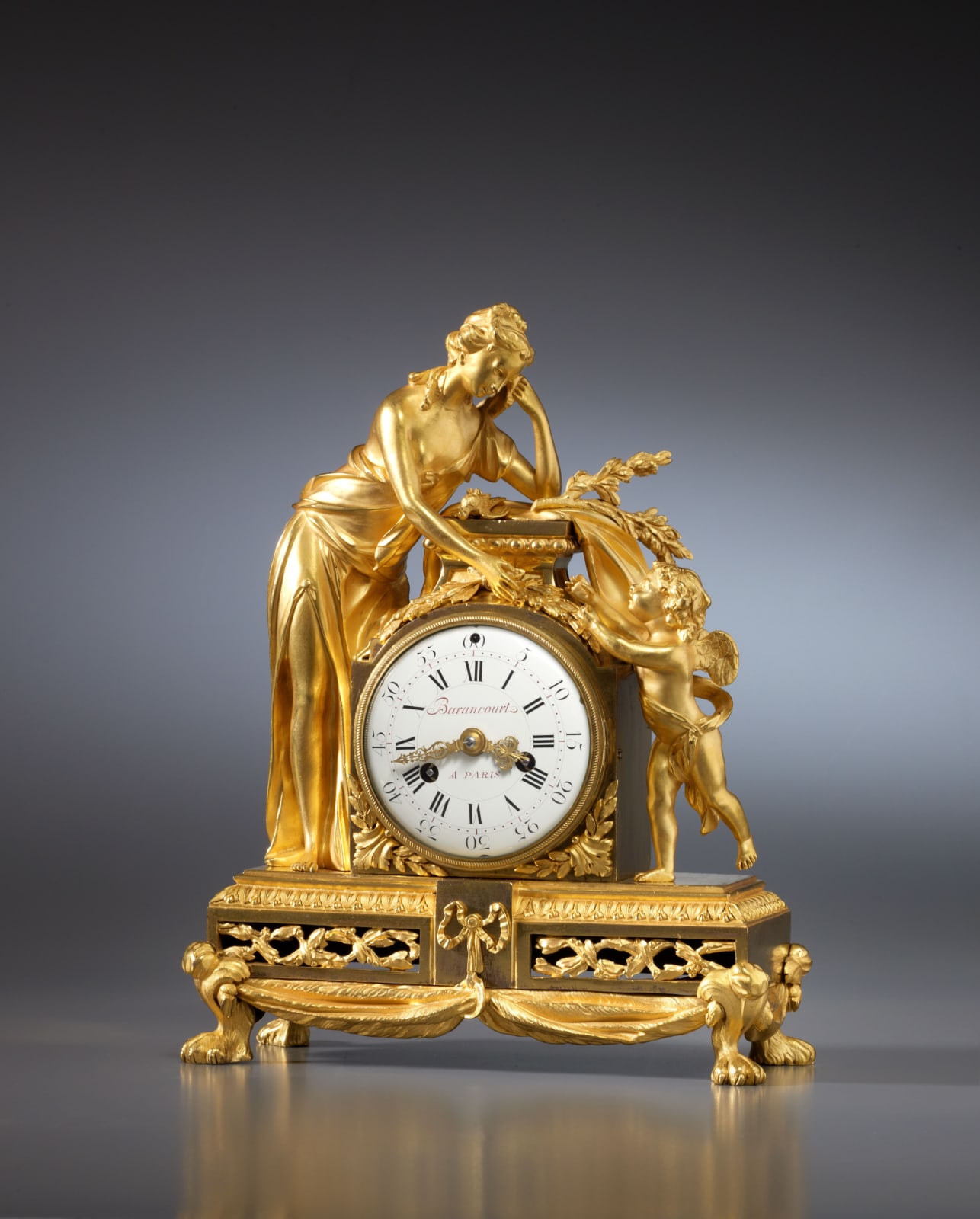Barancourt
Literature
Hans Ottomeyer and Peter Pröschel, “Vergoldete Bronzen”, 1986, p. 247, pls. 4.6.9-10, respectively illustrating a pen and ink design by Vion for this clock as well as a similar clock signed on the dial Chles Le Roy à Paris.
Jean-Dominique Augarde, “Les Ouvriers du Temps”, 1996, p 242, pl. 191, illustrating a clock of the same model in gilt bronze and marble with movement by Jean-Baptiste Lepaute.
Pierre Kjellberg, “Encyclopédie de la Pendule Française du Moyen Age au XXe Siècle”, 1997, p. 246, pl. A, illustrating a clock of the similar model in gilt bronze and marble with movement by Roque.
An very fine Louis XVI gilt bronze mantel clock of eight day duration signed on the white enamel dial Barancourt à Paris, the dial with Arabic numerals and a very fine pair of gilt brass hands for the hours and minutes. The fine movement with anchor escapement, striking on the hour and half hours with outside count wheel. The magnificent gilt bronze case attributed to François Vion featuring a beautiful maiden in diaphanous dress leaning upon a plinth toward Cupid as he offers her a dove in his outstretched hands, the dial plinth mounted below with foliate spandrels upon a shaped rectangular bleu turquin marble base
Paris, date circa 1775
Height 30,5 cm, width 23,5 cm, depth 10.5 cm.
The model for this superb case can be firmly attributed to the celebrated fondeur-ciseleur François Vion (b. circa 1737 d. after 1790), who was received as a maître in 1764. His design, popularly known as ‘L’Amour Offrant un Oiseau à l’Amitié’, ‘La Pleureuse’ or ‘Le Retour de l’Amour’ appeared in an album of watercolours, preserved at the Bibliothèque Doucet, Paris and also in the Livre de desseins no. 31, when it was inscribed with Vion’s name and priced at 450 livres. Queen Marie Antoinette owned an identical clock with movement by the royal clockmaker Robert Robin which was displayed at the Trianon, Palais de Versailles. Another was listed in 1777 in the apartments of the comte d’Artois, later Charles X at the Palais du Temple. Other clocks of this model can be found in the Château de Versailles and the Bayreuther Schloss. The style of the clock accorded with the vogue for the Antique, as promoted by the leading Parisian marchand-merciers during the 1760’s. Its subject celebrates the triumph of Lyric Poetry, recalling the Roman poet Catullus’ ode on the death of a sparrow. Here Love is personified by Cupid as he attends a mourning nymph, who indicates time’s passing on the clock dial.
